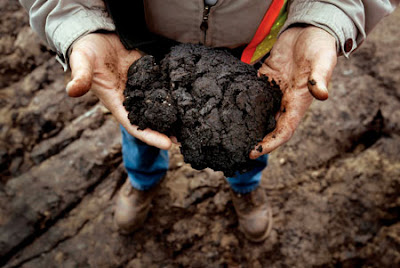Canadian heavy crude oil prices are generally set by Midwest refining economics. Global light / heavy crude spread ultimately sets the price for oil sands blends.
According to
Purvin and Gertz, a major independent energy consulting firm, The light/heavy differential significantly increases the profitability of upgrading the bitumen to a synthetic crude oil.

The Lloyd blend heavy sour oil was worth $57 on
November 2, 2007. NYMEX WTI was around $96. Upgrading of the bitumen to a synthetic crude oil (SCO) that is comparable to WTI would cost $12.
While SCO commands a premium price to WTI and is in many ways comparable to light sweet crude, the high aromaticity of bitumen from which it is derived limits its penetration into refineries that are not specially equipped to handle it. A typical refinery is limited to between 10-20% of SCO in its crude slate. Part of the solution lies in additional technical/infrastructure capability in existing or new refineries and another lies in producing a higher quality light sweet synthetic crude, something being planned by a few of the new oil sands projects.
According to the
Canadian Association of Petroleum Producers:
 Synthetic Crude Oil (SCO)
Synthetic Crude Oil (SCO) trades at a
premium to WTI
-Current: $ 1US/bbl
Bitumen Blends trade at a
discount to WTI
-Current: $ 23 US/bbl
Unprocessed bitumen is also marketed, but for pipeline transportation reasons must be shipped in diluted form. It sells at a considerable discount to synthetic crude as can be explained by the light-heavy differential: because heavy oil is worth less to a refiner, it typically sells at a discount to light oil. This difference in price is referred to as the differential. When the differential widens, it means that heavy oil is trading at a larger discount to light oil and it fetches a lower price. Bitumen is discounted yet again with respect to heavy oil.
Therefore, refiners are able to profit significantly from the end products.
Petro-Canada has calculated that the bitumen netback depends on value of bitumen blend and the cost of diluent.
The Canadian Association of Petroleum Producers state that in recent years, slower natural gas growth, a shift to producing drier gas with less pentanes and competing demands for natural gas liquids have constrained available supplies of condensate.
Escalating prices and insufficient condensate supplies combined with growing supplies of heavy/bitumen crude that need a source of diluent have forced producers to examine other options. As a replacement for condensate, producers of oil sands bitumen are starting to use light synthetic crude oil as an alternative source of diluent for blending to pipeline viscosity requirements. This trend to use synthetic crude have led to the evolution of a synthetic bitumen blend referred to as Synbit. Synbit is more leveraged due to the higher diluent ratio, lowering netback. Therefore, lower diluent costs increases the bitumen netback
There are a lot of proposed pipeline expansion projects that aim to be able to move the SCO to markets with significantly more refining capacity. This will decrease the amount to which bitumen is currently being discounted.
There are also a number of projects underway to increase the refining capabilities of bitumen and synthetic crude oil.







































